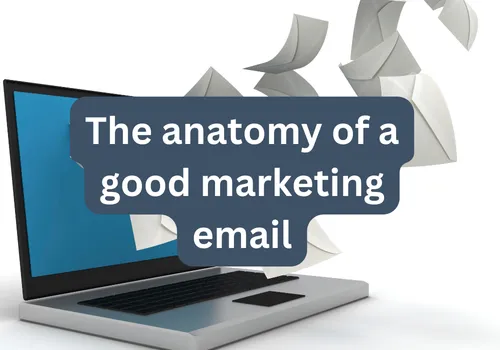Blog

The anatomy of a good marketing email
Lately, I’ve been analyzing the marketing targeted at me, trying to understand why it works (or doesn’t).
And this morning, I got a well-written cold email that really caught my attention. It was from a sales rep trying to get me to sponsor his conference.
I receive dozens of these every week and 99% go immediately into the trash. But something about this one was different from the others.
So I paused to analyze it.
—
Here's the email:
"Hey Zack,
Just doing a quick follow up on my email below.
Are you interested in showcasing your solutions in front of L&D decision-makers at the Corporate Learning Week Atlanta conference, taking place on October 7-9, 2024?
Our conference is unlike any others. Attendees actually engage with our sponsors demos and solutions in a fun way. We work with our partners to position them as thought leaders through our different platforms.
Click here to check out the companies who will be looking at your demo.
Interested? Here's my Calendly. Feel free to book a call."
—
At first glance, it doesn’t stand out as anything special. It’s just a rep asking me if I’m interested in sponsoring his conference.
It’s only a few lines long and doesn’t have any special promises or gimmicks. So why am I raving about it?
Let’s analyze it.
The subject line
Your email subject line is arguably the most important part of the entire email. If no one opens the email, the content inside means nothing.
This subject line was unique and piqued curiosity.
“Check it out?”
Did my friend or coworker email me something I need to see? I felt like I had to see what was inside.
Subject lines are all about standing out and creating curiosity. Get the person to notice the email and feel the need to open it, and you’re off to a great start.
The email length
In the corporate world, we’re easily led to believe the more descriptive we are and the more jargon we use, the more authority it gives us.
But with emails, especially cold emails, you don’t have the time to be long winded. And you don’t get extra points for being more confusing.
Most people scan emails. Sometimes they’re on their mobile devices. You have fractions of a second to get their attention or you lose them.
This email was SHORT and straight to the point.
He clearly stated who I’d be able to market to at this show and got straight to his offer. He didn’t try to bury his intentions.
He made it easy for me to quickly understand what he was pitching me.
From there, I could decide to read further or not.
The offer
Every email has a purpose. And when sending cold emails, that purpose is usually to get someone interested in your offer.
In this email, his offer was a conference where attendees actually engage with the sponsors.
To make the offer even stronger, he provided a clear differentiator & a tangible benefit. He explained why his company’s conference was superior by mentioning a common problem with them; a lack of engagement with demos on-site.
He described a benefit that I would understand, and that few other conferences can promise.
This offer was tangible, different, and well explained in only a few sentences.
The call-to-action
At the end of every email, you must ask the reader to do something (call-to-action). A common mistake I see is a CTA that is too hard of a sell, typically asking for a meeting.
Most prospects will be reluctant to jump on a meeting with you after just one email. It’s usually just too big of an investment, causing them to just not respond altogether.
Instead of going for the kill immediately, he gave me the option to learn more first. He then left a link to book a call, but kept it casual with "feel free."
This allowed me to decide how I wanted to take the next step without feeling much pressure.
The send time (bonus)
There’s heaps of data that show optimal send times for emails. While there’s some science to it, sometimes you can just get lucky.
This email was sent at 1 AM. Whether or not marketers would advise you to send emails at this hour, it put the email near the top of my inbox. It stood out immediately because of that.
Most promotional emails are sent during the middle of the day. This makes it easy to identify as marketing-related. This one didn’t strike me as such, which caused me to notice it.
Conclusion
Are there things that could be improved with this email? Certainly.
But it’s not always about being perfect - email marketing is part art and part science. Regardless of the fine tuning that could be done, it effective enough to get me to notice it and take action.
…Probably more action than he expected, as I’ve now written an entire post about it.
Good work by this rep.
B2B Marketing
I help companies build a marketing strategy for growth, retention, and efficiency. I use my years of experience to help formulate the correct strategy and plan for businesses.
Local Business Marketing
I work with small businesses to get their marketing to the next level and generate leads, appointments, and sales through tactics focused on small local businesses. See www.chewningdigital.com for more information.
Zack Chewning
B2B Marketing Manager | Strategist | Consultant
Contact
© Copyright 2024. Zack Chewning. All rights reserved.


